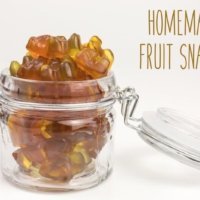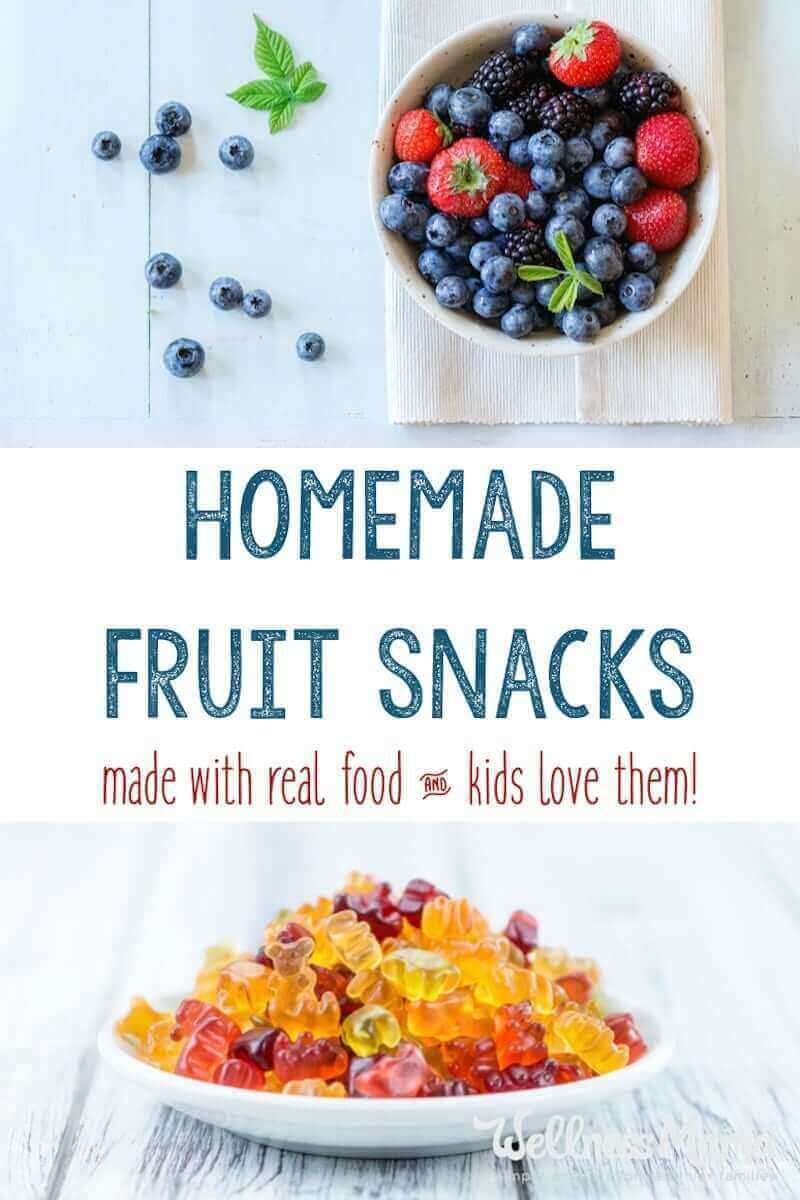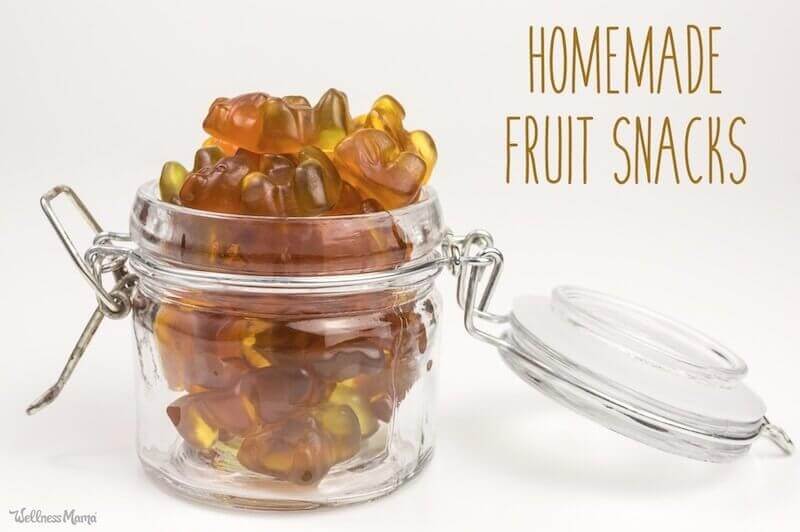We are big fans of gelatin at our house and we use it in a lot of different ways. These homemade fruit snacks and homemade marshmallows are the kid-favorites in our house, and I can feel good about giving it to them since it is a source of protein and vitamins.
Erase the idea of gummy bears as a junky treat from your mind… these homemade fruit snacks look just like them (although their texture is a little softer, like jello) but they’re actually health food!
Healthy Gummy Bears? Yes!
Why make homemade fruit snacks? I can think of three good reasons:
- It’s a really quick and easy recipe (even the kids can do this one themselves)
- They are SO much healthier than store-bought
- They’re really fun to make!
Not only do these fruit snacks have no artificial colors or flavors, they have the gut-soothing benefits and protein of gelatin. The kombucha adds nutrients as well, making these fruit snacks even healthier.
Tip: Add additional nutrition by make these chewable vitamins instead or make them flu-busting gummy bears with a few simple substitutions.
How to Make Homemade Fruit Snacks
Again, this recipe is super simple. All you need is kombucha or fruit juice (100% juice or freshly squeezed), a candy mold, and powdered unflavored gelatin from a good (grass-fed) source.
Heat the juice or kombucha, whisk in the gelatin, pour into molds, and let it set! You’ll have fruit snacks for a crowd in no time.
If you don’t have a mold, an oiled container works in a pinch. Cut gummies into small cubes once set.
Go with the classic bear shaped molds or try fun assorted geometric shapes, dinosaur molds, bugs and flowers, and even this unlikely combo Lego/hearts set so you have something to please everyone!
The recipe fills about 4-5 of these molds, or a medium baking dish (oiled). If you use a baking dish, just cut the fruit snacks once they gel. If you use the molds, stick them in the refrigerator to firm up. Tip: After they are set, put them in the freezer for 5 minutes to make them come out easier.
There really are endless ways this recipe could be adapted, and I’ve included our favorite below. If you experiment with different flavors or combinations, please share them below!

Homemade Fruit Snacks Recipe
Servings
Ingredients
- 2 cups fruit juice (or kombucha or other liquid of choice)
- ¼ cup honey (or maple syrup, optional)
- 1 cup berries (pureed, optional)
- 8 TBSP gelatin powder
Instructions
- Combine fruit juice or kombucha and honey/maple syrup if using in a small saucepan.
- Heat over low heat until warm and starting to simmer, but not hot or boiling.
- Add pureed fruit, if using.
- Sprinkle the gelatin over the juice mixture while whisking or using an immersion blender. Continue doing this until all gelatin is incorporated and the mixture is smooth. Adding the gelatin too quickly will make it more difficult to get the mixture to incorporate. An immersion blender is not necessary but greatly speeds up the process.
- As soon as the gelatin is mixed in and the mixture is smooth, pour into molds or a lined/greased baking dish and place in the refrigerator or freezer until hardened.
- Pop the gummies out of the molds and store in a sealed container in the refrigerator.
Nutrition
Notes
- It is important to have all ingredients ready before beginning as you’ll need to work quickly once you start.
- Make sure you are using gelatin, not collagen hydrolysate or peptides as they will not gel. I’ve also had some feedback that the Great Lakes brand of gelatin doesn’t work well in this recipe.
What is your favorite healthy homemade snack? Ever made any like these? Share below!



Leave a Reply